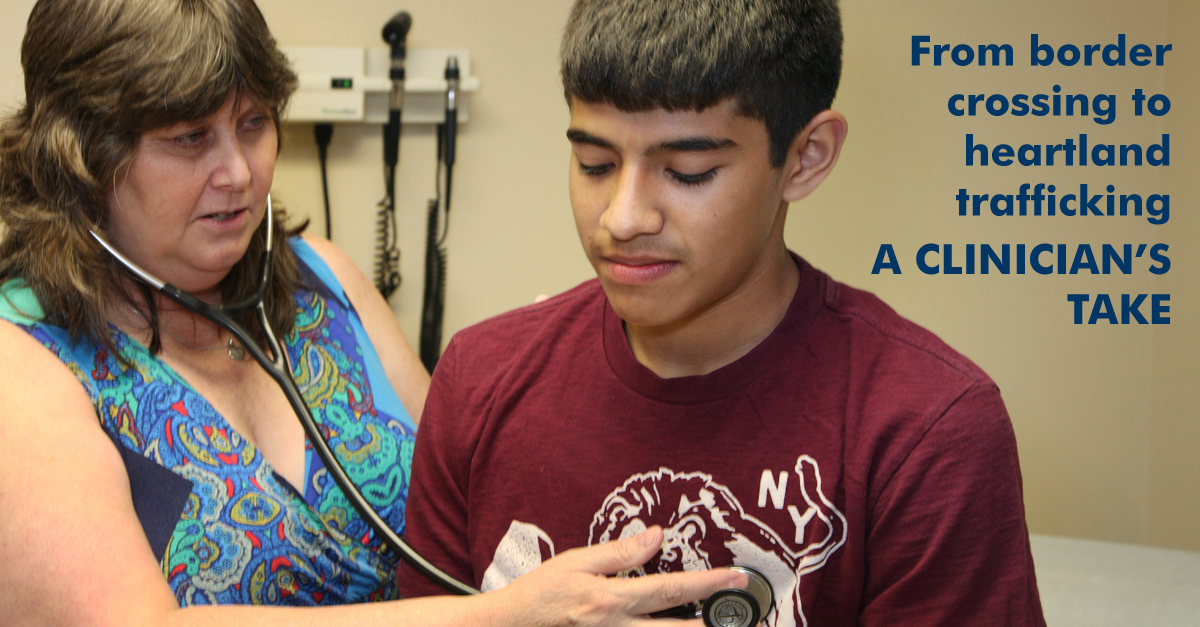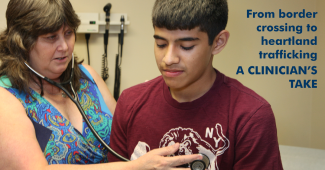From border crossing to heartland trafficking: a clinician’s take
 Last week, the Washington Post ran a front-page article about immigrant children who, having crossed the US-Mexico border unaccompanied, were apprehended by federal authorities. But instead of being released to a sponsor, who in most cases is a family member or a family friend vetted by authorities, these children wound up trafficked into a commercial egg farm in Ohio. They were housed in run-down trailers, one of which lacked a toilet, another which had its mattresses directly on dirt. Their paychecks were confiscated and they were provided a small portion of the money for food. Their traffickers were arrested recently.
Last week, the Washington Post ran a front-page article about immigrant children who, having crossed the US-Mexico border unaccompanied, were apprehended by federal authorities. But instead of being released to a sponsor, who in most cases is a family member or a family friend vetted by authorities, these children wound up trafficked into a commercial egg farm in Ohio. They were housed in run-down trailers, one of which lacked a toilet, another which had its mattresses directly on dirt. Their paychecks were confiscated and they were provided a small portion of the money for food. Their traffickers were arrested recently.
Senator Rob Portman of Ohio, who held a hearing last week regarding the Department of Health and Human Services’s process of resettlement, recently said in a statement, “Based on what I have learned to date, I am concerned that the child placement process failures that contributed to the [egg farm] trafficking case are part of a systemic problem rather than a one-off incident.”
Recent immigrants may be at a higher risk of trafficking due to their vulnerability while they are on the move. Without a community or social network, in a new region where the language, the norms, even the terrain may be foreign, immigrants may have fewer resources to help them escape and/or report trafficking when it has occurred. While this recent exposé highlights the need for diligence on the part of the federal government, clinicians too must step up their screening to assure that immigrants, particularly newer ones, who arrive in our exam rooms, are not victims of trafficking.
Rescue & Restore, from the Office of Refugee Resettlement, suggests the following screening questions:
- Can you leave your job or situation if you want?
- Can you come and go as you please?
- Have you been threatened if you try to leave?
- Have you been physically harmed in any way?
- What are your working or living conditions like?
- Where do you sleep and eat?
- Do you sleep in a bed, on a cot, or on the floor?
- Have you ever been deprived of food, water, sleep, or medical care?
- Do you have to ask permission to eat, sleep, or go to the bathroom?
- Are there locks on your doors and windows so you cannot get out?
- Has anyone threatened your family?
- Has your identification or documentation been taken from you?
- Is anyone forcing you to do anything that you do not want to do?
MCN recommends the following resources for more information on serving a population at risk for trafficking:
MCN’s archived webinar, “Trama-Informed Care: Behavioral Health in the Primary Care Setting”: http://www.migrantclinician.org/toolsource/resource/trauma-informed-care
Rescue & Restore’s Look Beneath the Surface: http://www.acf.hhs.gov/programs/orr/programs/anti-trafficking
The National Human Trafficking Resource Center covers both sex and labor trafficking, and promotes their national hotline, 888-373-7888. http://www.traffickingresourcecenter.org/
Like what you see? Amplify our collective voice with a contribution.
Return to the main blog page or sign up for blog updates here.
- Log in to post comments

